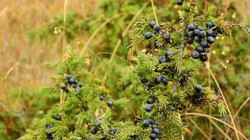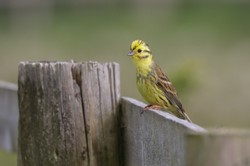Humans love forests, we have a natural tendency to stroll forest paths, savouring the interplay of light and shade that twinkles through the forest canopy. Forests are places where we sense the mysteries of nature. But industrialization has wrought great damage to these woodlands as we consume them without sufficient care and with a paucity of reverence. But souls invigorated or enchanted by the wonders of nature are taking up the challenge and replanting and enlarging ancient woodlands. One such forest is Hafod Gogarrog. Let us take a literary stroll through its arbours.

A Forest for the Future
by frankbeswick
The Hafod Gogarrog Forest in Snowdonia, officially known now as Eryie. is a bold initiative to join up scattered fragments of the ancient rain forests of western Britain.
Get to Know the Forest.
" A nation grows great when old men plant trees under whose shade they will never sit" runs the ancient Greek proverb. Neither the author nor my readers is likely to see the forest come to fruition, though as the forest is a combination of ancient growth with modern planting, they will have something to cherish. Fragments of ancient Celtic rainforests are being joined up with plantings from local seeds to produce a large area of forested land on the western edge of Eryri, known as Snowdonia. There are patches of this ancient woodland in Wales, the south western English counties of Devon and Cornwall, where they are found on the moorlands such as the granite fastness of Dartmoor, parts of Cumbria, a mountainous region of North West England, and Western Scotland. There are small patches in Northern Ireland. All tracts of these forests have in common that they are in western regions not far from the sea. Joining up the lot would be well nigh impossible, as the tracts in Devon and Cornwall are over a hundred miles away from North and West Wales. But connecting the Welsh tracts is a start.
The word hafod speaks of history. Welsh mountain farms practiced transhumance farming, with farmers spending summer in the hafods, mountain dwellings where they could give their animals the benefit of high pasture. This particular territory lies on the west side of the mountain, facing the sunset that sinks below the western horizon overlooking the Irish Sea; on good days from Yr Wyddfa, the highest peak, you can get a distant view of the Wicklow Mountains in Ireland . All temperate rain forests are close to the sea. The area was mentioned in mediaeval Welsh poetry for its outstanding beauty, but like much of the forest landscape it fell to the ravages of industry over the years. Eventually we were left with fragments of the ancient wood, which often were situated in narrow ravines on remote land hard of access, but thus protected from exploitation.
In keeping with the modern philosophy of planting native species in lands to be afforested the seedlings to be planted are started in the tree nurseries which are springing up in North Wales to service the forest's needs. All seeds are to be collected locally from native species and varieties, but this enterprise throws up its challenges, for where are clearly native varieties, there are other plants that are urgently staking claims. Let us take Ulmo, the elm, which has been the victim of a fungal infection known as Dutch Elm Disease, which has massacred Britain's elms. The disease kills off trees after the sapling phase, but foresters think that they might have discovered two trees that can survive longer than six years, so they are going to use the forests as nurseries to save a critically endangered species. The same rule applies to ash [Fraxinus] which is also threatened, though we are further ahead in our dealings with this than we are with elm.
Floral treasures
The landscape of the forest is Tolkienesque. Rocks are thickly cushioned with green mosses and lichens.Ancient trees covered with moss and trees twisted branches which show that they have neve been tended by humankind cluster in the ravines andon rock-strewn slopes under the shadow of hills of primeval rock. It is no wonder that Tolkien, with his imagination fed on myth, loved Wales.
There is so much oak, but not the more common Quercus robur, the common oak of the lowlands,English oak, but the Sessile oak, Quercus petreae, which lacks the peduncle [stalk] which joins its acorn to the branch. It is an oak of more acid soils, so well suited to mountainous land and moorlands. Much of the sessile oak wood was felled to make wooden warships. but we are now happily restoring it. But the oaks are a treasure of mosses and lichens, with each tree a trove of a unique combination of these fascinating botanical wonders. Some of the patches of moss and lichen may well have been growing in situ since the end of the Ice Age. Who could not be fascinated?
Not all the trees are native. The nurseries grow sycamore and black poplar, not native, but necessary. To gardeners sycamore can be a nuisance, as it gets everywhere, but with its acid bark it is a substitute for ash, which is threatened in Britain, as the insects that feed on ash can also feed on sycamore. Black poplar [Populus nigra subspecies Betulifolia] is Britain's rarest tree, so rare that isolated specimens are too far apart to be pollinated. The poplars are being propagated from cuttings. Juniper is not a bush of the deep forest, for it is like holly in being a plant of the forest edge where it is unlikely to be shaded out by larger specimens such as oak.
One important project is that Hattie Jones, a ranger and tree nursery worker, has been given the role of working on the propagation of juniper. This once popular shrub used to be common in British hills and mountains, but it has been becoming scarce. It has become scarce in my lifetime and seemed at risk of dying out. She is experimenting on the propagation of different varieties of juniper to replenish stocks of this important herb that is or was a popular flavouring for gin, and which in fact gave gin its name.
Another research role for the forest is the search for champion trees. These are trees of threatened kinds which display potentially beneficial mutations and from which humans will benefit if we propagate from them. We may well use them to save threatened species, possibly by hybridization. One important research role will be available to scientists studying mosses and lichens, who will have enough work to keepthem busy for the rest of their lives; and that is without going into detail on the studying of mammalian and avian wild life, which may extend out of its tiny ghettos in remote ravines.
Walking in the Forest
Let us jump forward and walk in the future. The ancient forest is a little older, but much healthier. Some of it is accessible to the public, but some parts, the rugged ones, stick to their long-established privacy in accordance with the habit of millennia. The foxes know their earths, and the owls hoot at night, while the birds of prey are masters of the sky. But the ancient landscapes are becoming accustomed to the proliferation of juvenile trees,and humans walking in its arbors on new paths, though some are established ones which humans have walked for years.
The sun is setting in the West when a young girl, maybe fifteen or so, sets out for home, armed with her camera and a stock of photographs for her school project. Today she has trodden paths ancient and modern, and she has drunk in the spirit of the wood. While she wanders along the path her mind strays to thoughts of Arthur and his knights, and she draws emotional strength from knights and their ladies. Then as gentle zephyrs bring in a slight chilliness, shivering the endless tremulousness of the aspens and causing the ever-present strands of self-seeded birch on the edge of the wood and the hornbeam and the the wild cherry to gently sway in sympathy, she begins to make for home and the comforts of civilization.. There at the path's end is a car and standing by it is her mother, waiitng. It is not just the forests that are ancient.
I aman Amazon associate and hope to earn money from qualifying purchases on this page.
You might also like
Explore The Thames Foreshore - Find Hidden TreasureComing to London? Why not visit the Thames foreshore and discover the fragme...
Touring North WalesNorth Wales is a beautiful land steeped in history and myth. It is a land wit...
From tor to shoreA new rewilding project is trying to join up some Cornish nature reserves int...





 Women of the Gospelson 10/11/2025
Women of the Gospelson 10/11/2025
 Religious Gardenson 08/25/2025
Religious Gardenson 08/25/2025
 Doctor of the Church: John Henry Newmanon 08/03/2025
Doctor of the Church: John Henry Newmanon 08/03/2025
 Restoring the Palm Houseon 07/16/2025
Restoring the Palm Houseon 07/16/2025




Comments
Yes. It is believed that for some time Welsh was spoken in South East Ireland, and a Welsh term for king is germ or, intern, hence Vortigern , great king.
Internet sources suggest a possible etymology as din teyrn, "rocks of the king" for Tintern.
Would that sound like a reasonable origin for the name to you on the eastern (Atlantic) pond side?
(Why would the name not be "rocks of God" since it would be regarding something other-worldly, something religious, something spiritual?)
Both abbeys were Cistercian foundations. The woods available for building are very much the same in Britain and Ireland.
Internet sources appear to represent "the other" Tintern Abbey -- in County Wexford -- as always having been built of stone.
Had it been built first of wood, might that wood have been the same -- since Wikipedia indicates it as likewise founded by William the Marshal and populated by its namesake's monks -- as that of the first, major Tintern Abbey of Monmouthshire, Wales?
Probably a variety of woods. Sessile oak was common in the region around Tintern and this madevsturdy structuresyew might have been used as it is flexible, and beech for furnishings.
The computer crashed before I finished my forest-, tree-, wood-related questioning regarding Tintern Abbey.
What might have been the reason for rebuilding? Was it perhaps because of weather wear-and-tear? Would its successor have been built as a faithful albeit stone structure?
The Bing page image today (Friday, Aug. 4, 2023) is Tintern Abbey.
The accompanying information lists the abbey as a wooden structure rebuilt in stone in 1269.
Might there be any indication, any information anywhere as to what kind of wood the abbey was made of?
The third sentence to your second subheading, Floral treasures, ends mentioning holly and juniper.
The western Unitedstatesian side of the (Atlantic) pond is a bit dismissive of juniper even as it is quite laudatory of holly. The former may be name-called a scrub or trash tree!
Would that be the tendency on your, eastern-pond side?
Black poplars are not native and were onlynplanted sporadically at sitescaround Britain, which meant that they were unlikely to pollinatebeach other.
The first paragraph to your second subheading, Floral treasures, considers black poplar and sycamore populations.
That paragraph describes black poplar trees too far apart to be pollinated. Does that mean that black poplars are extant in cultivation but extinct or near-extinct in the wild?